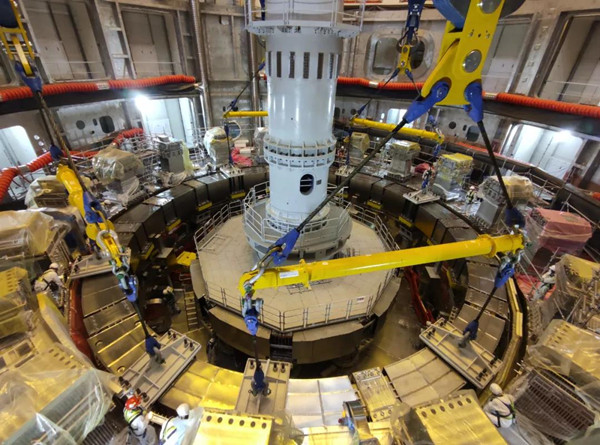Artificial Sun Fusion Reactor Completes First Stage Installation
The first stage installation of the artificial sun fusion reactor's main engine of the International Thermonuclear Experimental Reactor (ITER) project was completed on Sept 16 in France as the last main magnet at the bottom of the Tokamak device was hoisted.
The ITER project is currently the largest fusion reactor experiment in the world, with more complicated processes and technologies than most operating fission reactors.
The hoisting of large-sized and heavy components, as well as the installation and connection of high-vacuum and ultra high-vacuum components and superconducting parts, has been a great challenge during construction on the project.

The last main magnet at the bottom of the Tokamak device is hoisted on Sept 16 in France, ending the first stage installation of the ITER project. [Photo/sasac.gov.cn]
Led by China Nuclear Power Engineering Co., Ltd. of the China National Nuclear Corporation (CNNC), the project is being made possible through a Sino-French consortium that consists of CNNC's China Nuclear Industry 23 Construction Co., Ltd., the Southwestern Institute of Physics, the Institute of Plasma Physics of the Chinese Academy of Sciences and France-based Framatome.
The project has seen a great deal of progress so far, including the development and installation of its dewar base, bottom cooling shield, and poloidal field superconducting lines.
(Executive editor: Niu Yilin)



